|
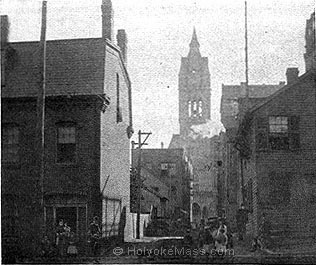
An Alley View of the City Hall.
|
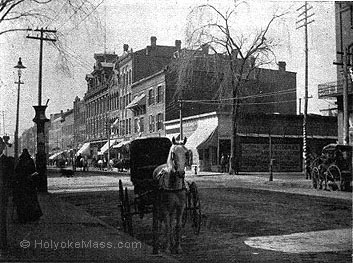
High Street Looking North From Hampden
|
|
|
More than one man lost his all by buying land when the town was on the boom, which later became next to worthless on his hands. One example was that of the Chapin Brothers, who had a store at "Baptist Village." It was a common variety store, and took farm produce in exchange, and was doing quite a thriving business. There were bankers, as well, in a small way, taking such money as the farmers of the region chose to leave with them, and paying interest therefor. This firm, in expectancy of the city's rapid growth, bought up a tract north of South street
|
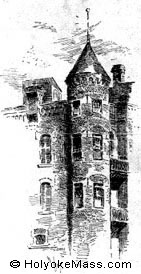
A Bit of High Street Architecture
|
and east of their village, known as "The Plain," and built on it half a dozen small houses. But they had made a miscalculation, and they presently failed. This failure made a great commotion, as, owing to their banking business, the whole community in the west part of the town was more or less involved. Exposed windows in vacant buildings were a temptation to the boys of those days, and the glass of these dwellings was broken by the stones they threw, and the uncared for houses, which had to wait twenty years for occupants made a dismal looking group.
|
It is remembered that in these dull years, just preceding the war, the Hamilton House, then known as the Holyoke House, was offered for sale for $20,000. It had just been built at a cost of $110,000, but no taker could be found even at the price quoted.
When the dam was finished, in 1849, the water fell perpendicularly over its crest, and its pounding could be heard for miles about. When the air was just right, the sound was audible was far away as Springfield. The water as it fell imparted to the earth a slight vibration, that would set such vibration, that would set such windows and doors as were not perfectly tight into a clicking motion. You might see a man jump up in the midst of service in one of the churches and stick his knife into some window that was keeping up an unchurchly rattling. Everything about a house that was the least bit loose was "a-shaking and a-clapping," and you could see the jarring motions of poles or sticks in the garden which were not very firmly set in the earth. These results were rather astonishing to begin with, but the natives soon became used to them. "The dam was a great music box," to be sure, but once having become accustomed to it, the sensation on getting out of hearing of its roar was a curious one. The stillness was almost oppressive. "It seemed as if Sunday was come; it made one feel queer; you couldn't think what the matter was, there was such a dead silence."
A little four-foot apron projected from the crest of the dam, and from this was suspended, some eight feet below, by iron rods, a plank walk on which one could pass beneath the sheet of water which was falling ver the dam. Not many would aspire to this experience, as a walk on those slippery planks in the mists and sprays from the flying waters, and with such a roar in your ears that you could hardly hear yourself think, would not be enjoyable to the average individual. The logs and ice dropping over the dam soon demolished this walk, and it was never rebuilt.
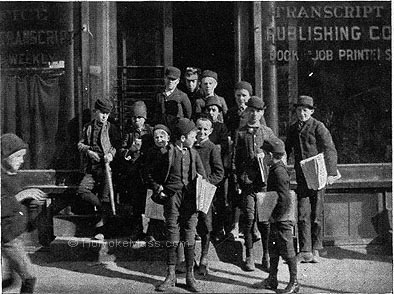
Holyoke Newsboys
|
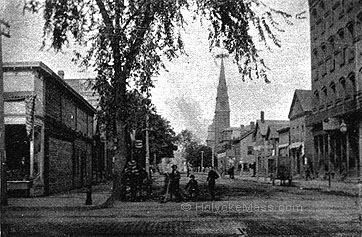
Looking Up Hampden Street from High
|
© Laurel O’Donnell 1996 - 2006, all rights reserved
This document may be downloaded for personal non-commercial use only
and may not be reproduced or distributed without permission in any format.
This is an edited adaptation from the original publication.
|
|
|